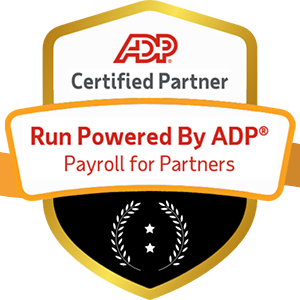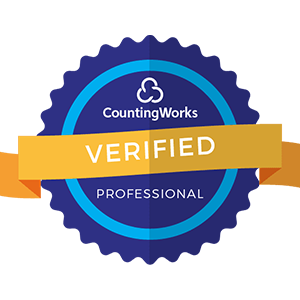
Introduction: In today's fast-paced, ever-changing business landscape, innovation has become a critical factor in determining an organization's success. Companies that can quickly adapt to new challenges and opportunities are more likely to thrive, while those that remain stagnant risk falling behind. Human Resources (HR) plays a crucial role in driving innovation within an organization by fostering a culture of creativity and agility. In this article, we will explore how HR can act as an innovation driver, the importance of creativity and agility in the workplace, and the strategies HR professionals can implement to cultivate these essential qualities.
HR is often viewed as a support function, responsible for managing administrative tasks such as payroll, benefits, and compliance. However, HR professionals have the potential to be strategic partners in driving innovation within their organizations. By aligning HR practices with the company's overall business strategy, HR can create an environment that encourages employees to think creatively, take risks, and embrace change.
One of the primary ways HR can drive innovation is by attracting and retaining top talent. Innovative companies require employees who are not only skilled in their respective fields but also possess the creativity and adaptability necessary to generate new ideas and solutions. HR professionals can work with hiring managers to identify the key characteristics and competencies needed for innovation and develop recruitment strategies that target individuals with these qualities.
In addition to attracting innovative talent, HR can also play a role in fostering a culture of creativity and agility within the organization. This can be achieved through various initiatives, such as:
HR can facilitate cross-functional collaboration by creating opportunities for employees from different departments to work together on projects and share ideas. This can lead to the development of new products, services, or processes that may not have been possible within a single department.
Innovative companies recognize the importance of continuous learning and development. HR can support this by offering training programs that help employees acquire new skills and knowledge, as well as by providing opportunities for employees to attend conferences, workshops, and other educational events.
HR can help create a culture that values innovation by recognizing and rewarding employees who demonstrate creativity and agility in their work. This can include formal recognition programs, such as employee of the month awards, as well as informal recognition, such as public praise or small tokens of appreciation.

Creativity is often associated with artistic pursuits, such as painting, writing, or music. However, creativity is also essential in the business world, where it can lead to the development of new products, services, and processes that give companies a competitive edge. In fact, a study by Adobe found that companies that foster creativity are 3.5 times more likely to outperform their peers in revenue growth.
One of the key benefits of creativity in the workplace is that it allows employees to approach problems from new angles and generate innovative solutions. When employees are encouraged to think outside the box and challenge the status quo, they are more likely to come up with ideas that can lead to significant improvements in efficiency, productivity, and customer satisfaction.
However, fostering creativity in the workplace can be challenging, as many employees may feel pressure to conform to established norms and procedures. HR professionals can help overcome this challenge by creating a safe and supportive environment where employees feel comfortable expressing their ideas and taking risks.
Some strategies for fostering creativity in the workplace include:
Giving employees the freedom to make decisions and take ownership of their work can help foster a sense of empowerment and encourage them to think creatively.
Allowing employees to experiment with new ideas and approaches, even if they don't always succeed, can help create a culture of innovation and risk-taking.
Diverse teams bring a range of perspectives and experiences to the table, which can lead to more creative problem-solving and decision-making.
In addition to creativity, agility has become an increasingly important quality in the modern workplace. Agility refers to an organization's ability to quickly adapt to changing circumstances and pivot in response to new challenges and opportunities. In today's rapidly evolving business environment, companies that can demonstrate agility are more likely to stay ahead of the competition and achieve long-term success.
One of the primary benefits of agility is that it allows organizations to respond quickly to changes in the market, such as shifts in customer preferences or the emergence of new technologies. Agile companies are able to quickly identify these changes and adjust their strategies accordingly, while less agile companies may struggle to keep up.
Another benefit of agility is that it can help organizations become more efficient and effective in their operations. Agile companies are able to quickly identify and eliminate bottlenecks and inefficiencies, leading to improved productivity and cost savings.
HR professionals can play a key role in fostering agility within their organizations by implementing strategies such as:
Encouraging employees from different departments to work together can help break down silos and facilitate the sharing of knowledge and resources, leading to more agile decision-making.
Implementing regular feedback loops, such as employee surveys or focus groups, can help organizations quickly identify areas for improvement and make necessary changes.
Investing in technology that supports agility, such as project management software or collaboration tools, can help organizations become more responsive and adaptable.

Now that we have explored the importance of creativity and agility in the workplace, let's take a closer look at some specific strategies HR professionals can implement to cultivate these qualities:
When recruiting new employees, look for candidates who demonstrate creativity and adaptability in their previous work experiences or personal pursuits. Consider incorporating behavioral interview questions that assess these qualities, such as "Tell me about a time when you had to think outside the box to solve a problem" or "Describe a situation where you had to quickly adapt to a changing circumstance."
Offer training programs that help employees develop their creative problem-solving and critical thinking skills. Consider partnering with external organizations or bringing in outside experts to provide workshops or seminars on topics such as design thinking or agile methodologies.
Encourage employees to take risks and experiment with new ideas, even if they don't always succeed. Celebrate failures as learning opportunities and recognize employees who demonstrate a willingness to try new things.


